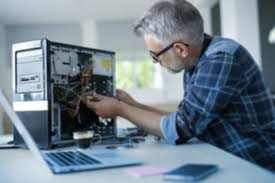The Internet powers the 21st century. Adults and children alike use the web for so many activities, from streaming games to communicating with friends and family around the world. Do not sacrifice that connectivity when you move. Stay connected with all of the people and pastimes that matter to you by setting up Internet service for the home.
All you have got to try to do is pick an online provider and plan that matches your browsing habits. Follow the tips below to quickly and easily get high-speed Internet in your home.
1) Connect a Modem and Router
Both of these devices (Modem and Router) are necessary as the modem will supply the Internet whereas the router will provide it wirelessly. Remember that without a router setup it is not possible to set up a wireless network.
2) Change the Channel or Band
Wi-Fi signals are divided into channels. Your router uses a specific Wi-Fi channel to communicate with the devices around your home. If you have neighbours living very close who have routers using the same Wi-Fi channel, then everything can get congested quickly. Switching to a different channel can solve this problem.
3) Updated Your Hardware and Software
For software, it is best and easiest to put in a driver updater, which can automatically check your drivers and install any available updates.
4) Extend your Range
Plug-in range extenders are one option, and there are many options that are not too expensive. The safest thing is to select an extender made by the company that made your router.
5) Prioritize Work Traffic
The 5GHz band is faster, while the 2.4GHz band offers a better range. It is good to select the bandwidth that optimises your internet activity and prevents other users from impacting your speed. Most routers have an optional guest network setting; this can be used to prevent your kids from eating through excessive bandwidth!
6) Home Network IP Addresses
Every device requires an IP address. It is provided automatically by a service called DHCP which, by default, is provided by the Home Wifi Setup. Static Addresses are not generally assigned; although they are often needed when using Port forwarding.
When you hook up to the web, your device will use an external IP address. And that address is the IP address of the router/hub. The IP addresses utilised for your home network are also known as internal addresses.
7) Get a Wi-Fi Extender
If your router settings are becoming too complicated or slow, we would suggest you invest in a Wi-Fi extender or repeater. These devices plug into a spare power socket, hook up with the wireless Internet getting beamed out by your router, and then extend it further.
Takeaway:
These days, Wi-Fi is a necessity. Try and learn how to set up a Wi-Fi connection. But if you are having any trouble with the setup of your new wifi connection, just contact us on 1300 016 017.





